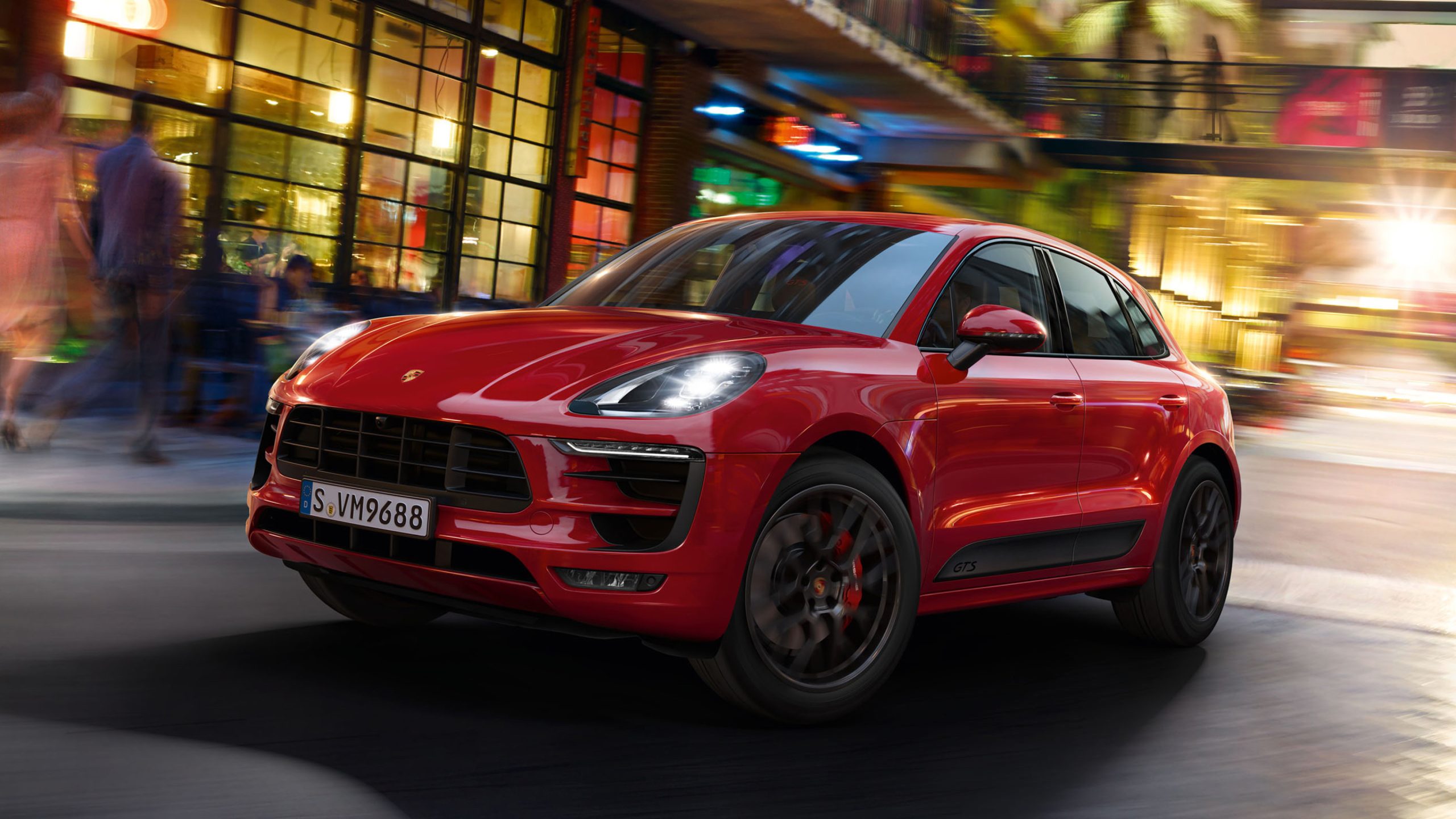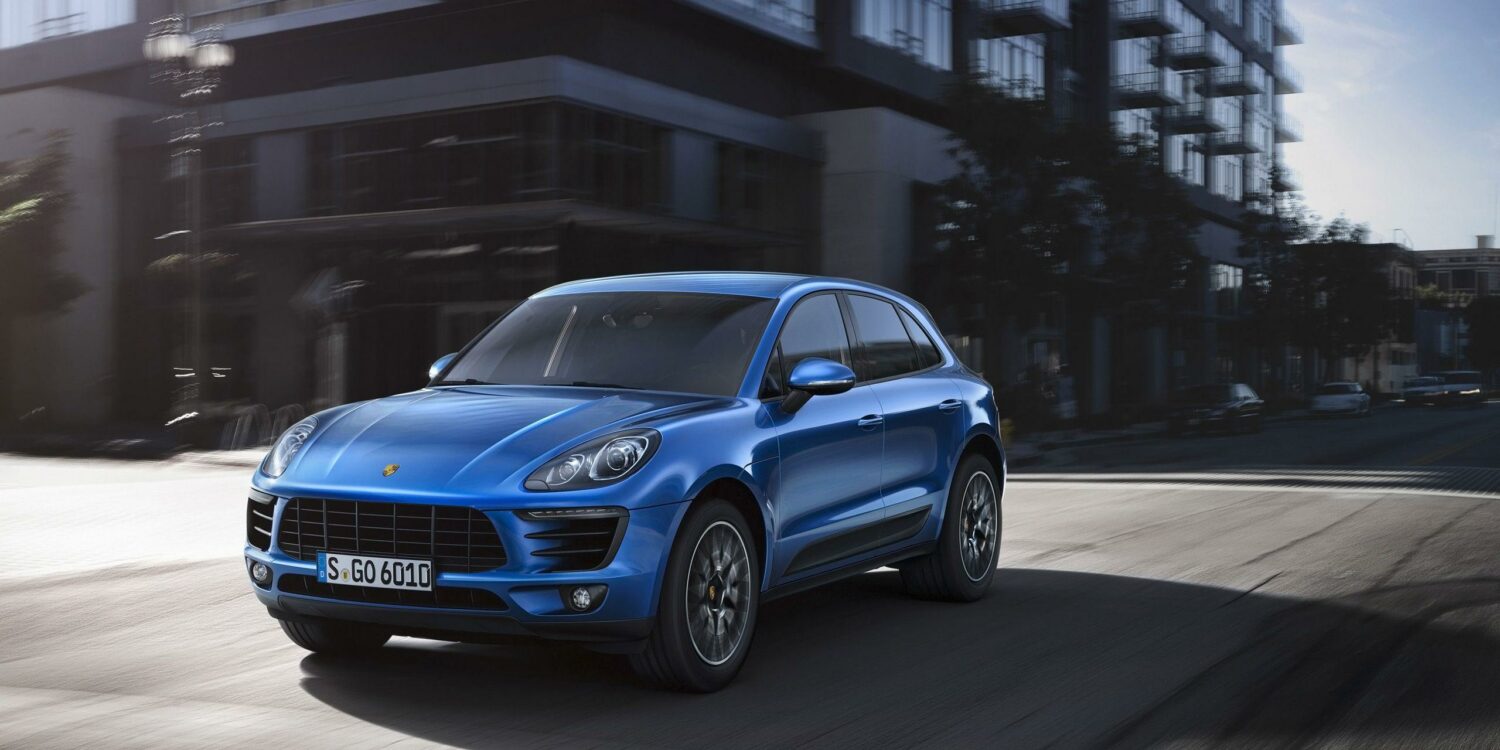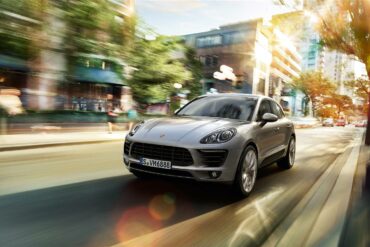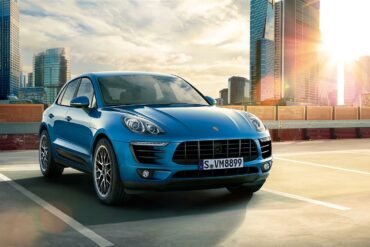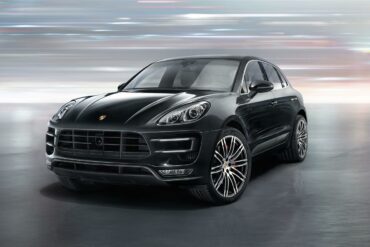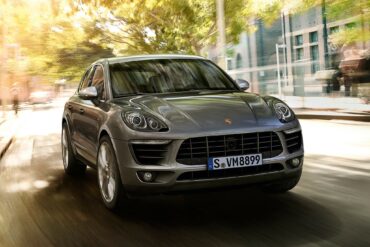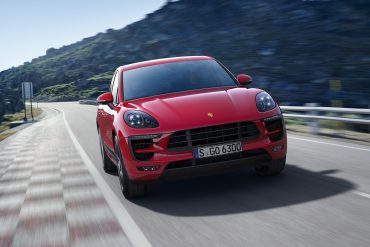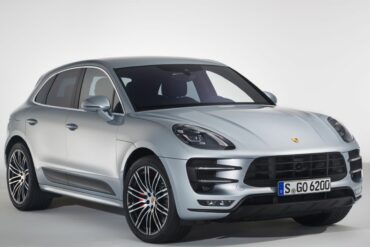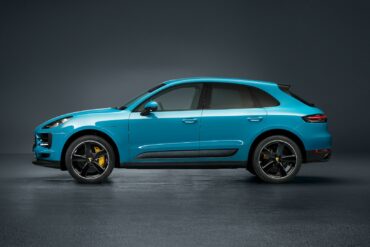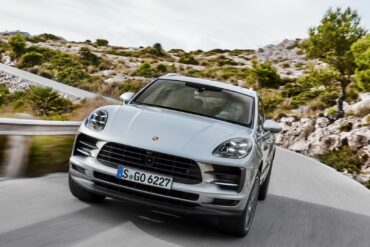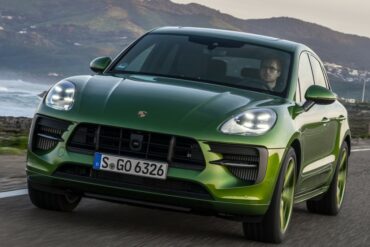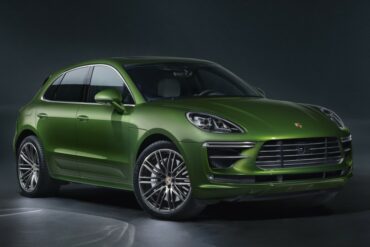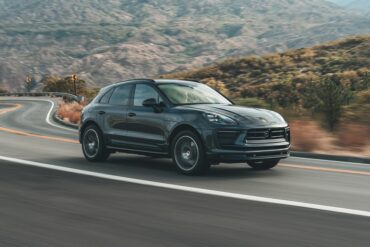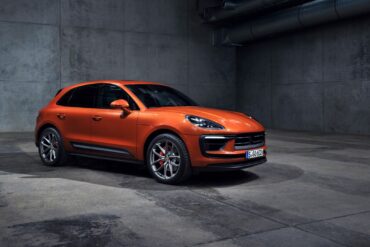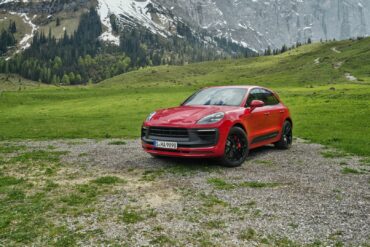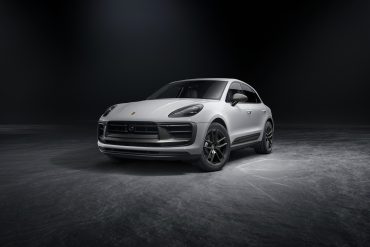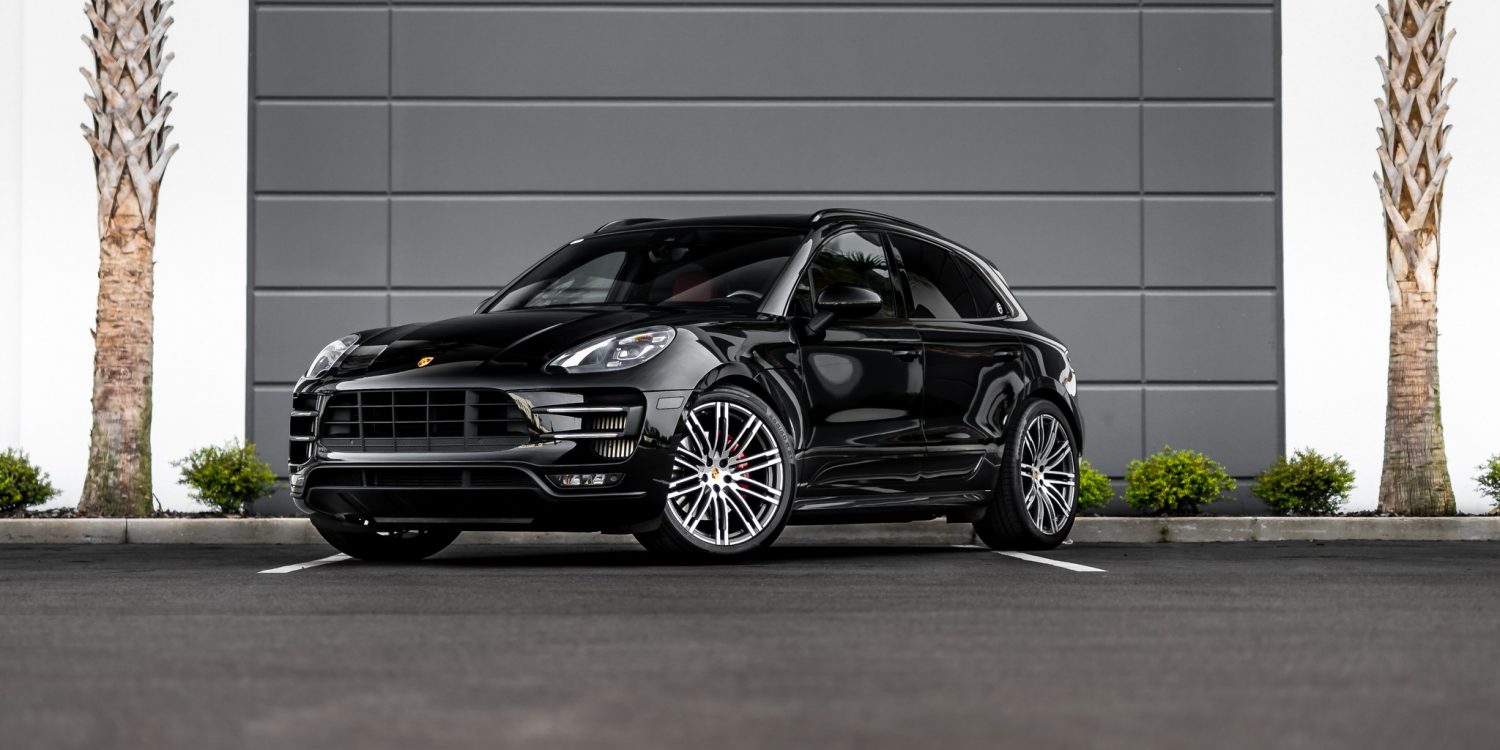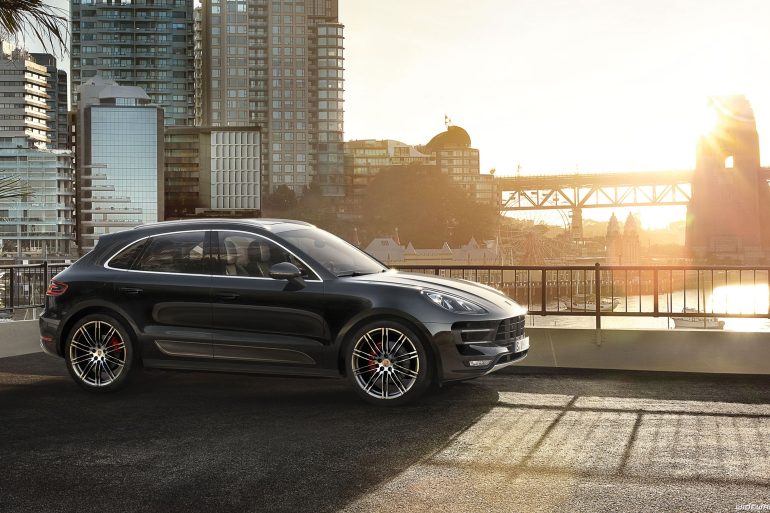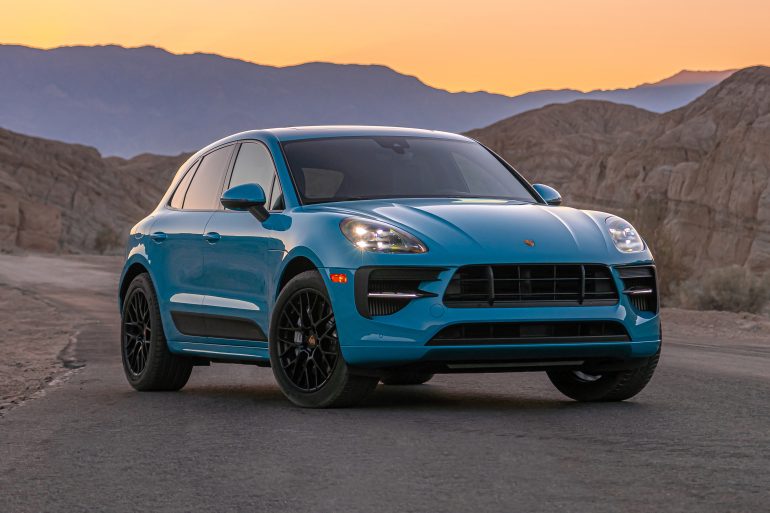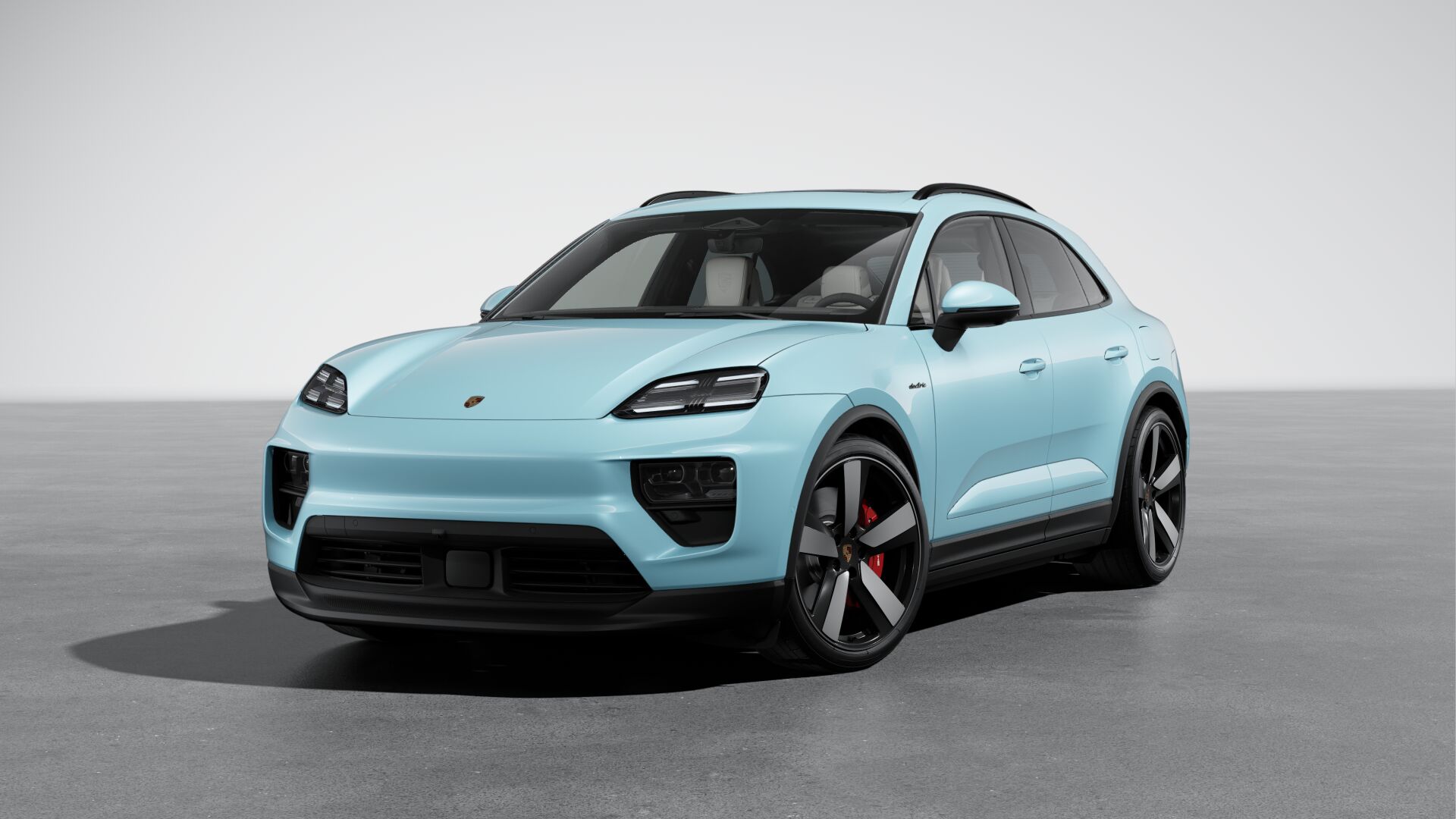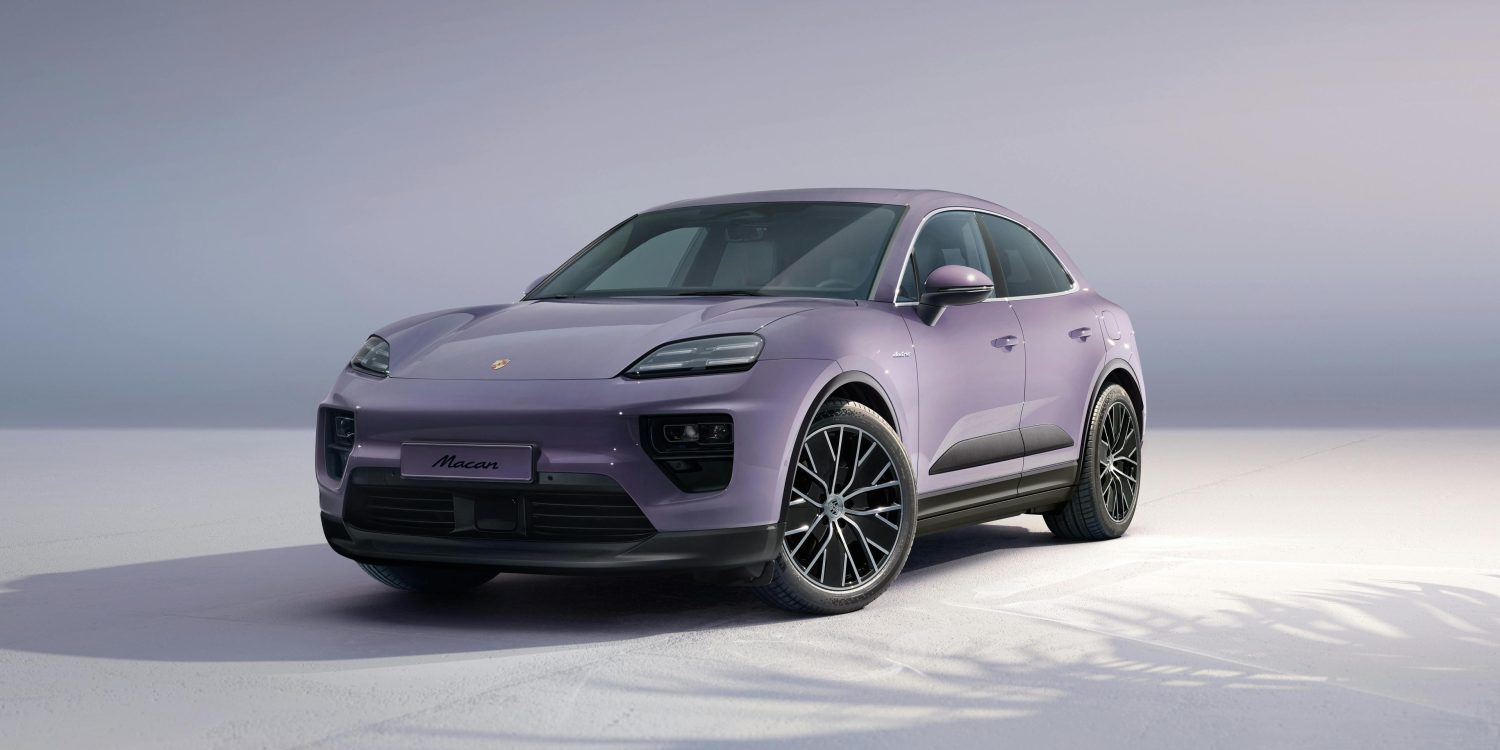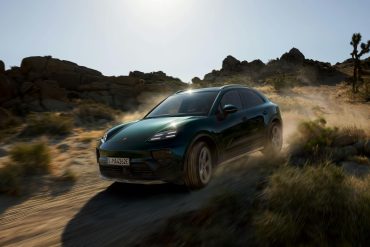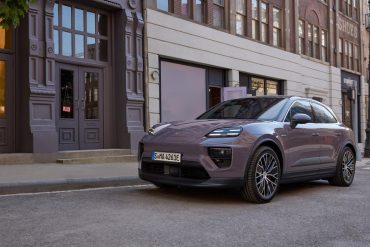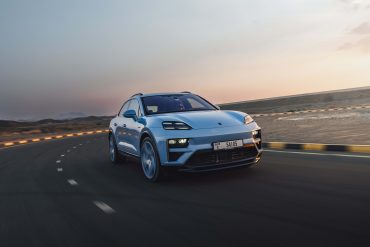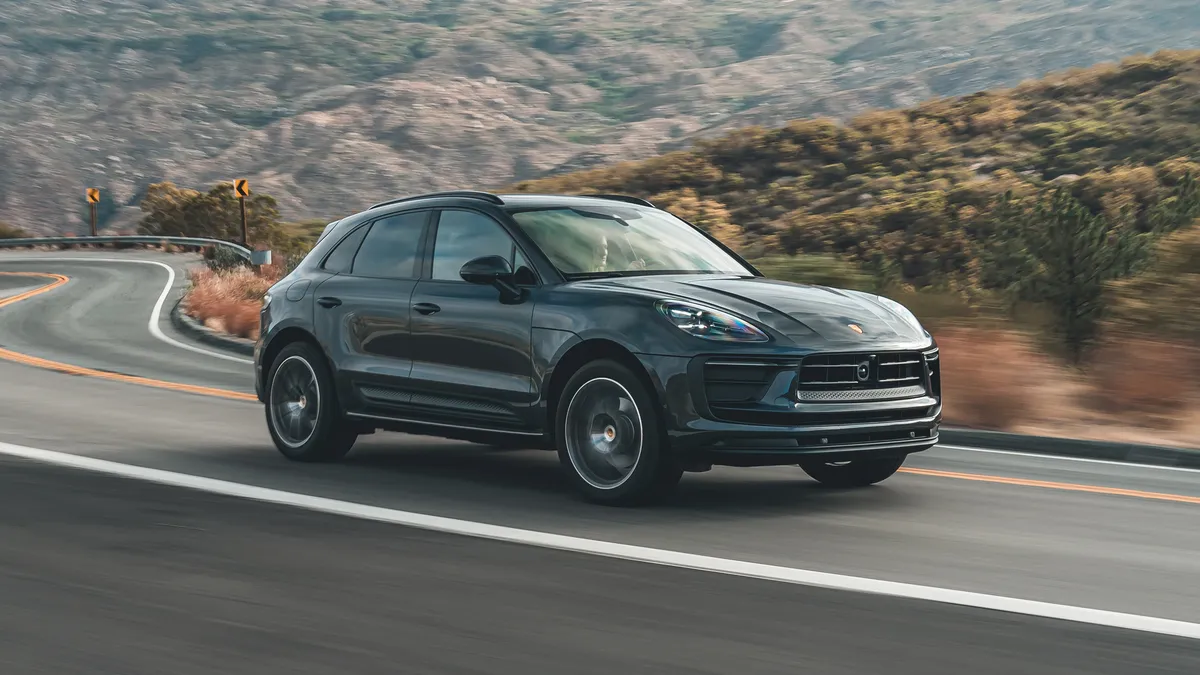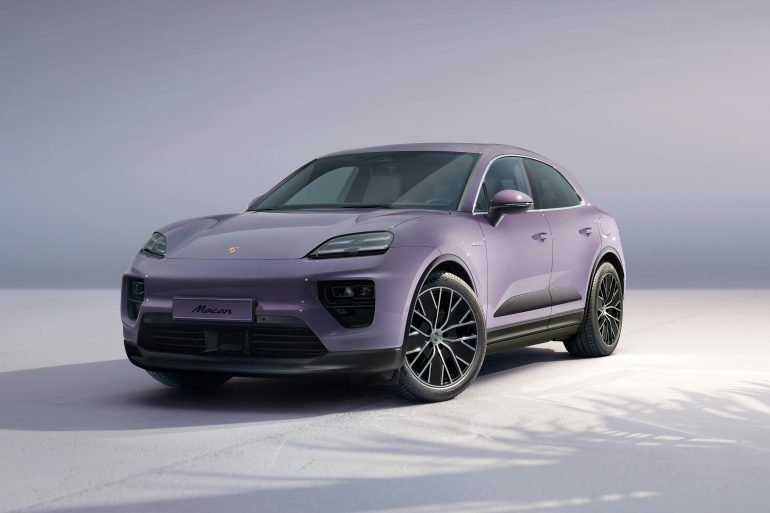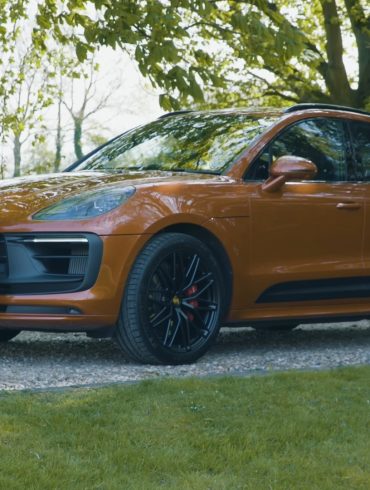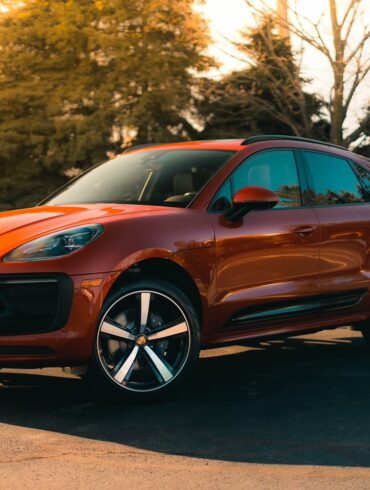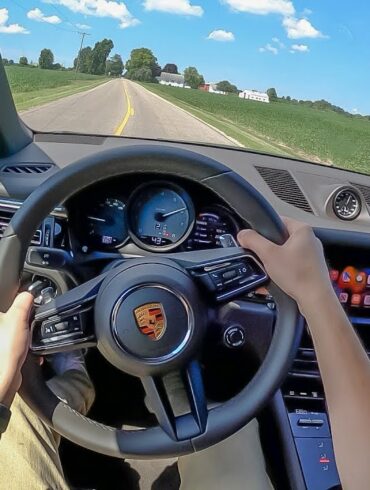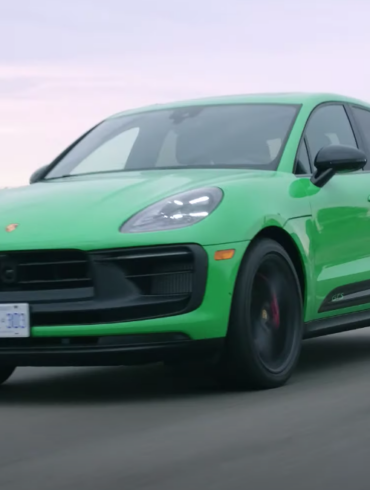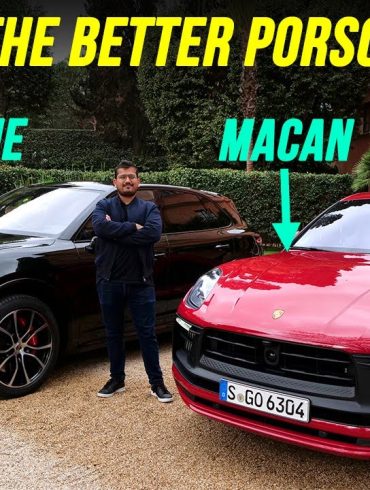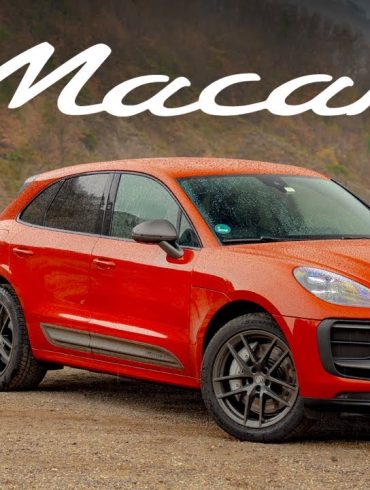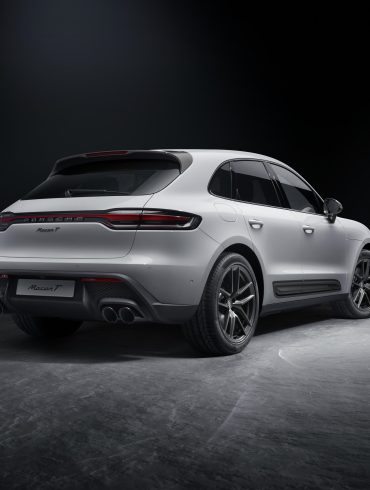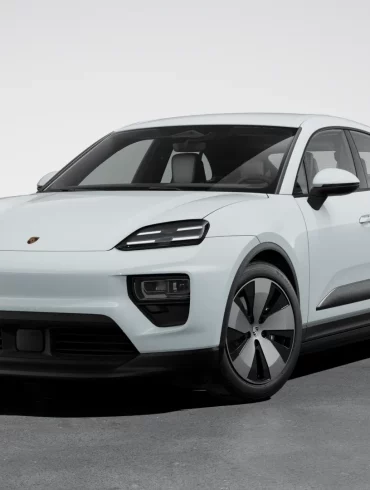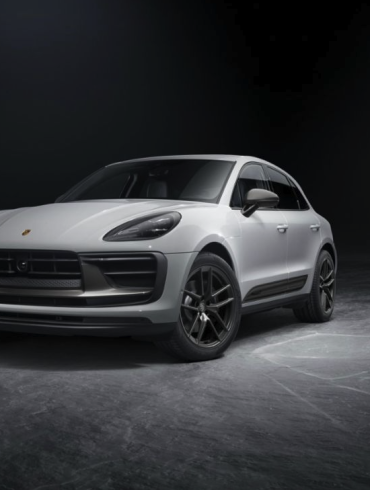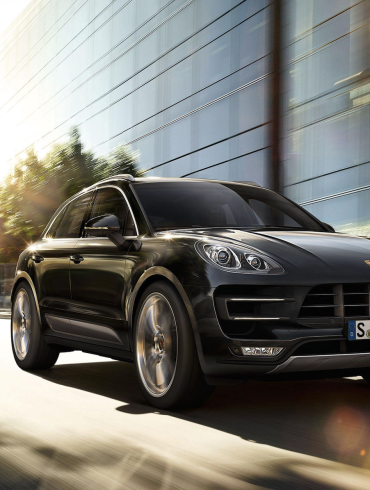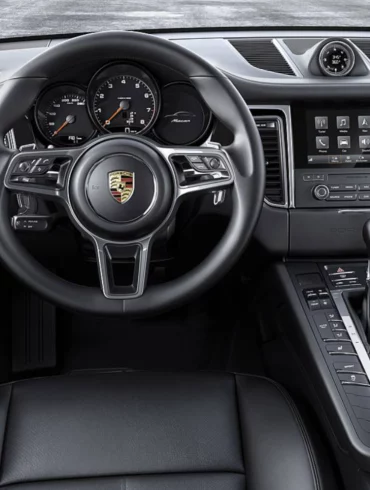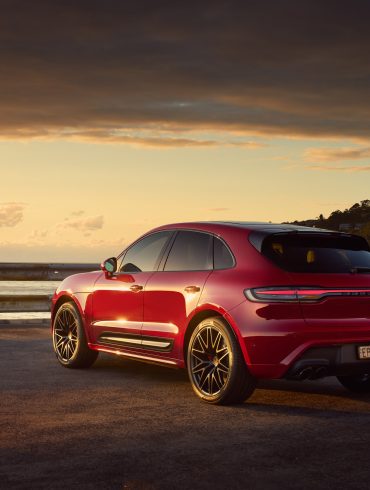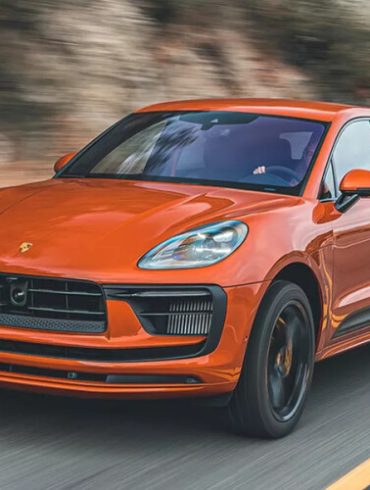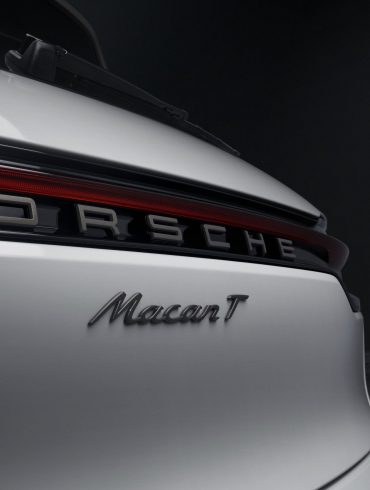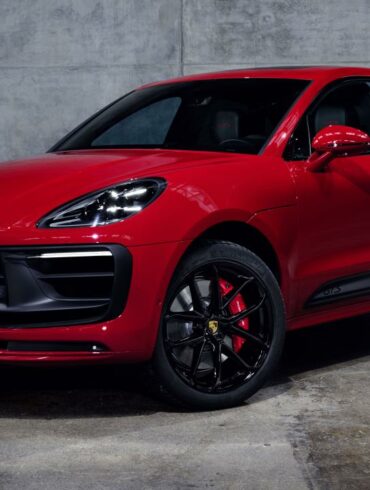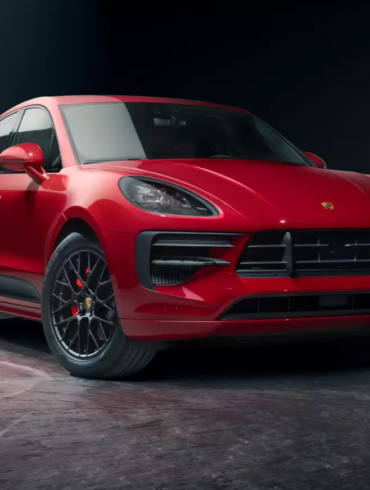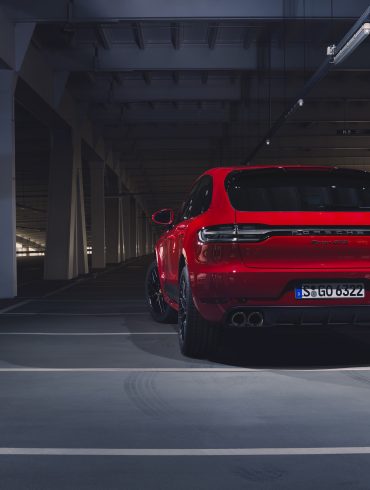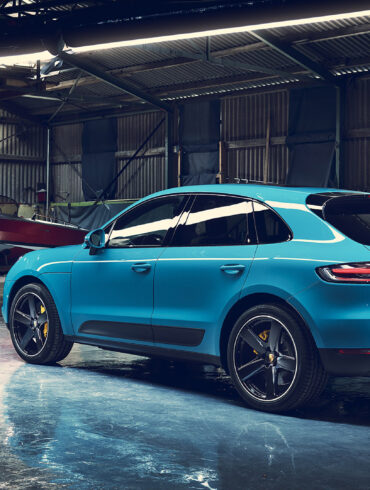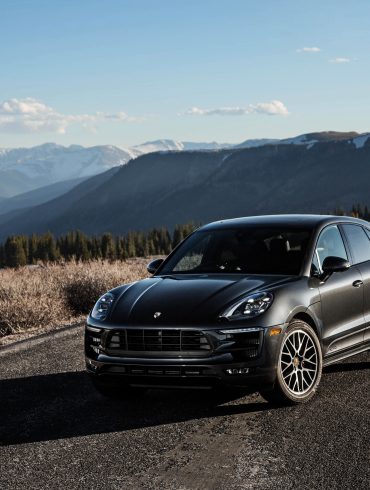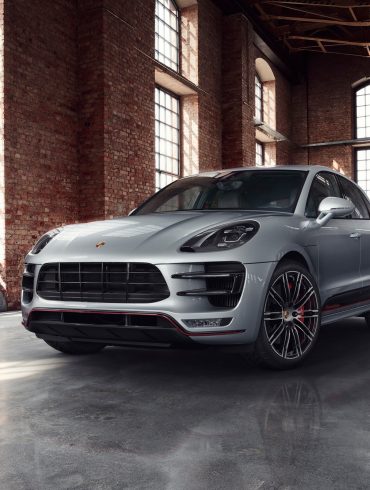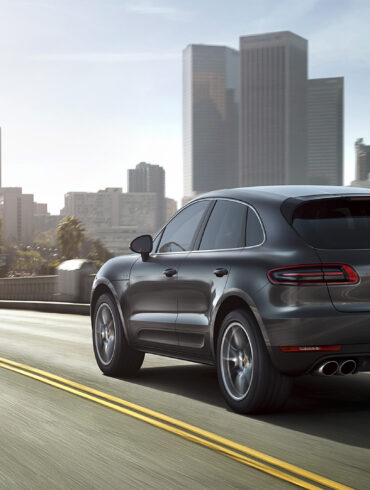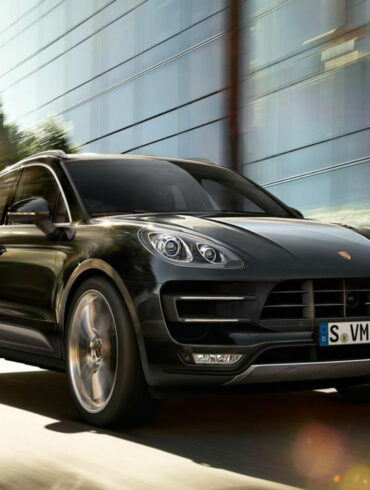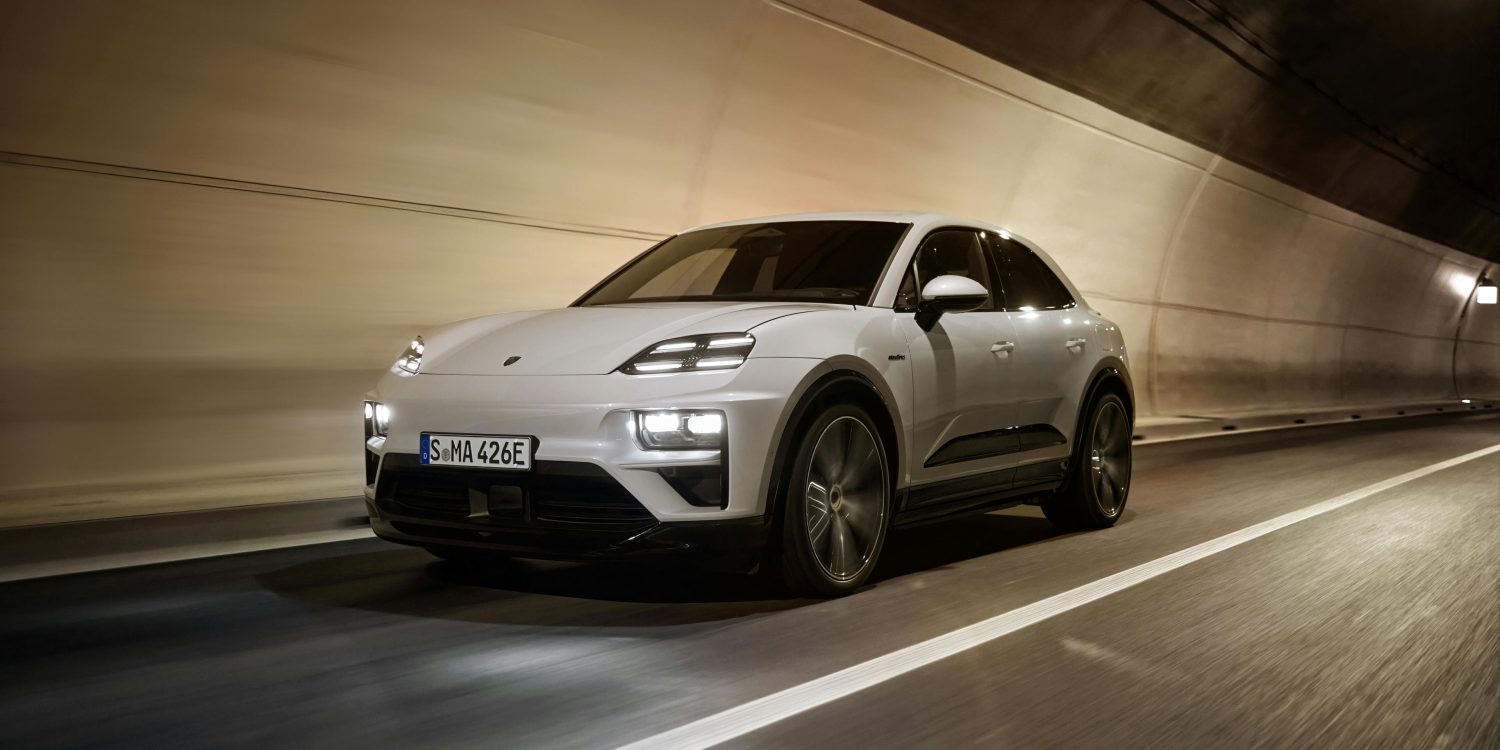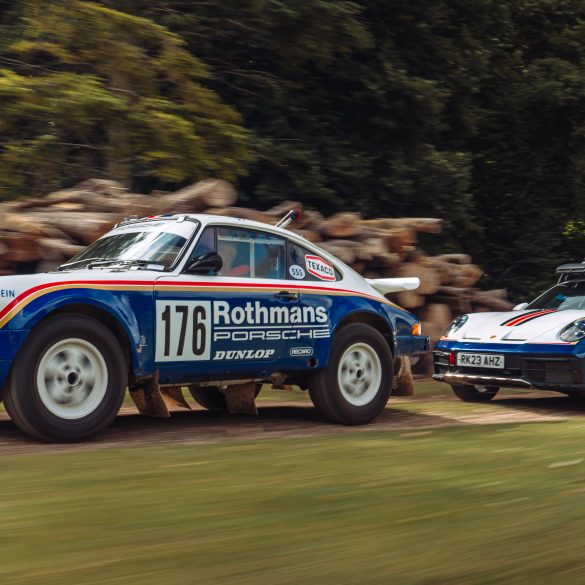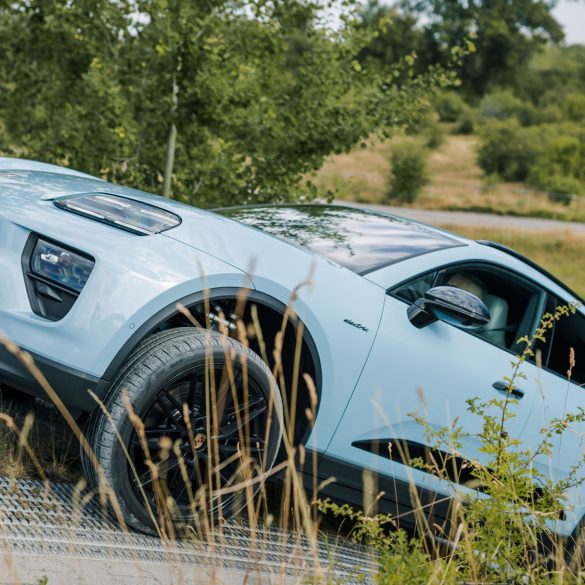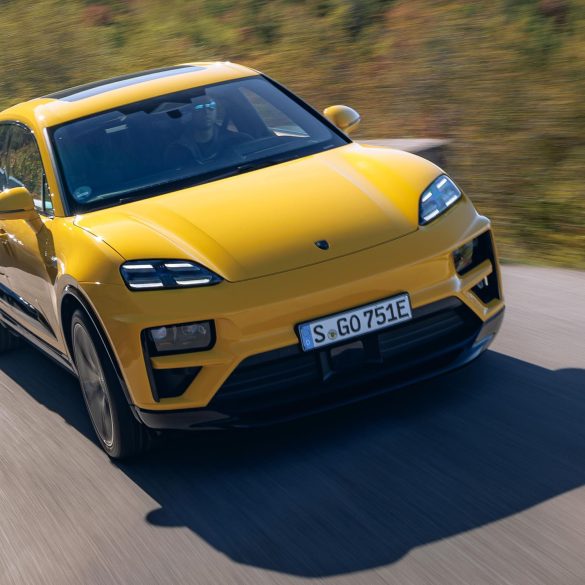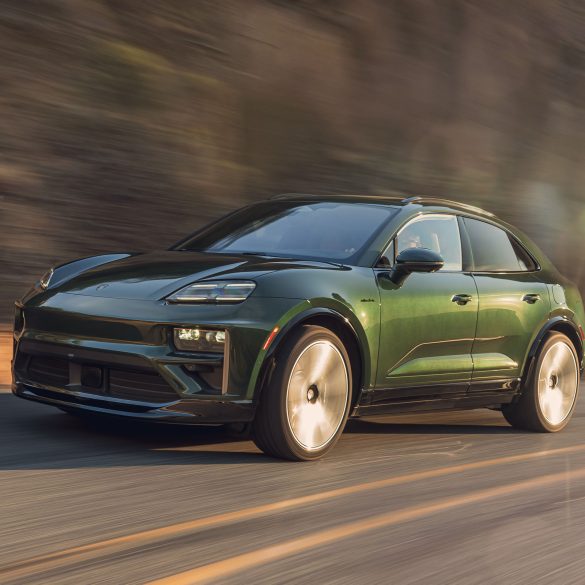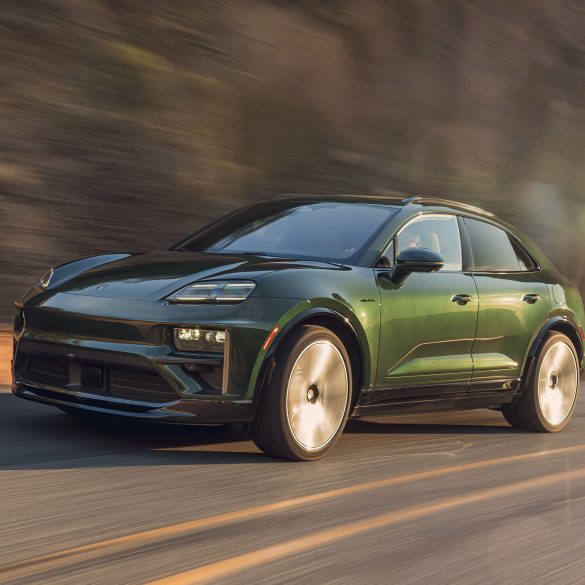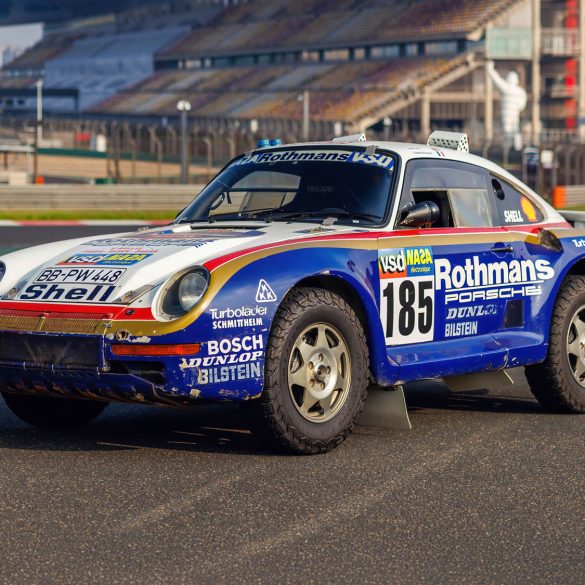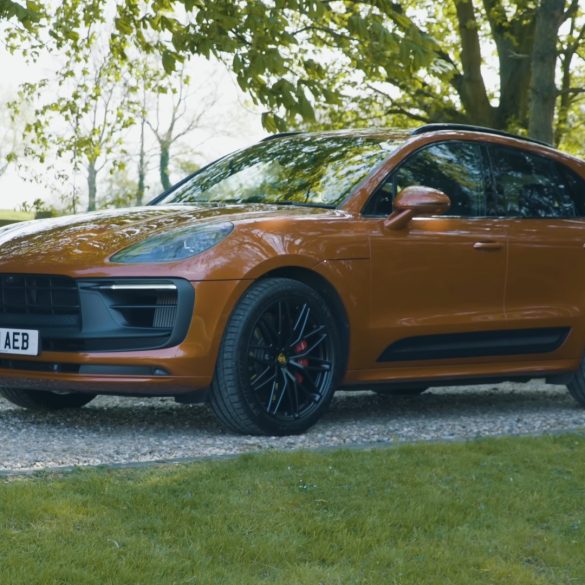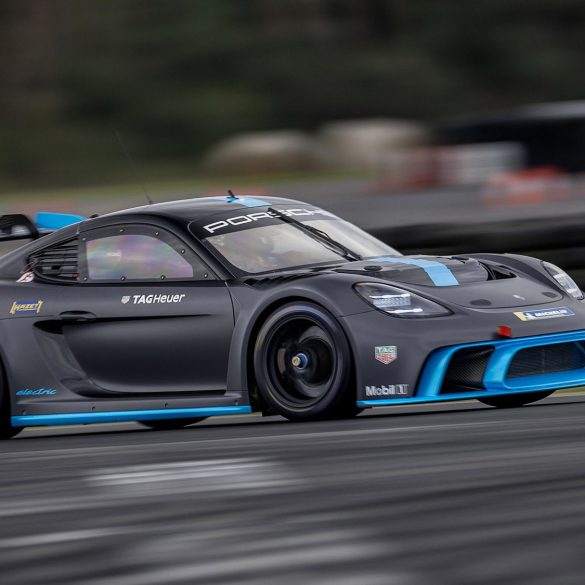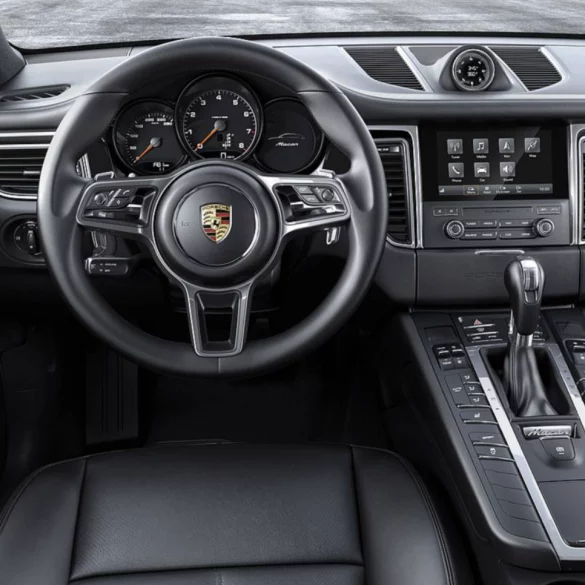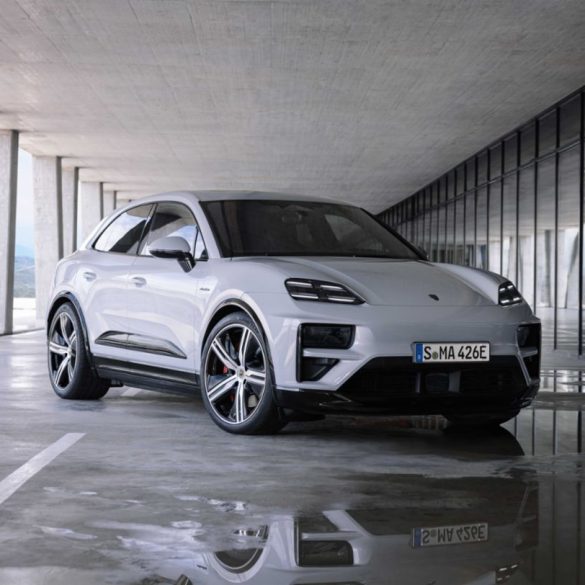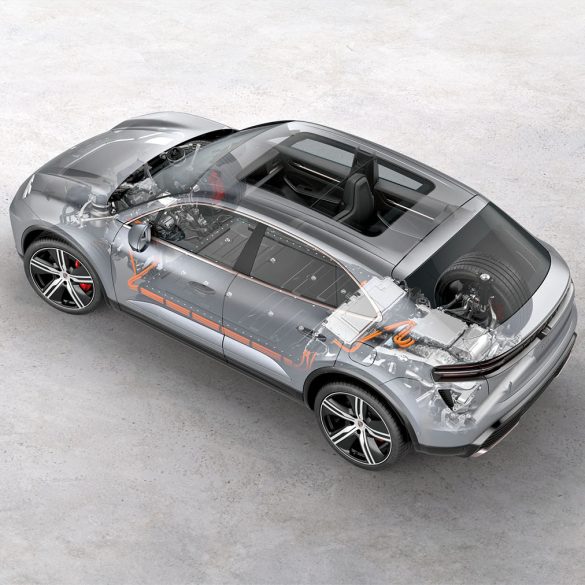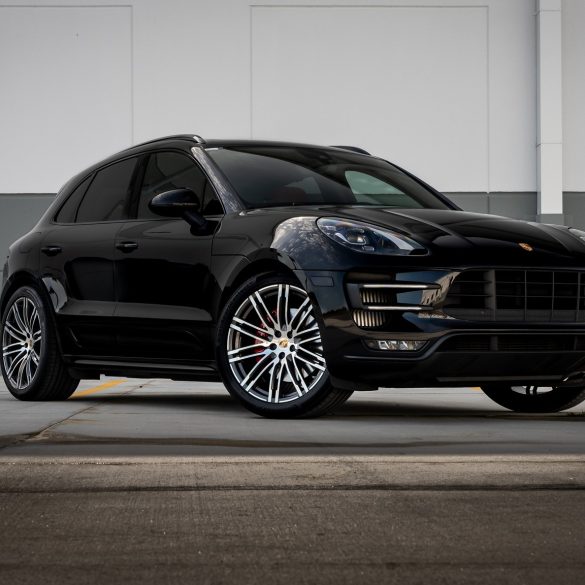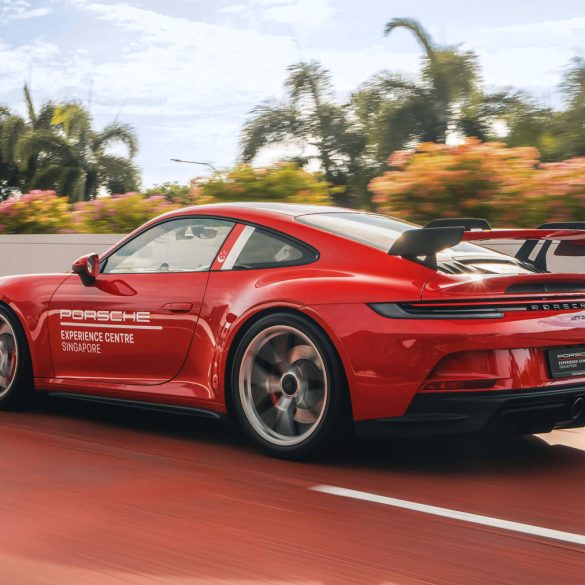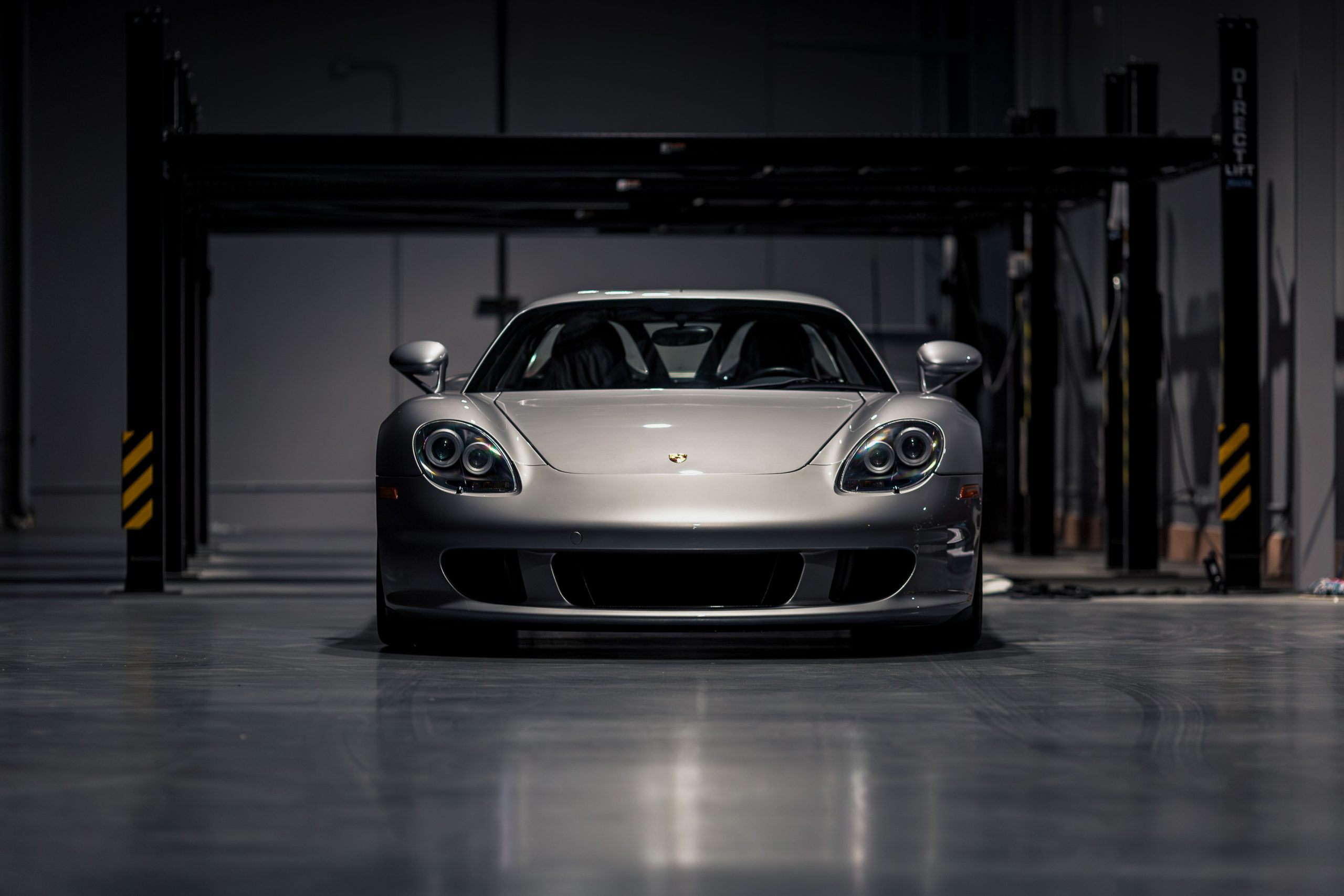Porsche Macan - The Ultimate Guide
The Diminutive SUV. A Class-Leader From Day One
Generations Primer / 1st Gen / 2nd Gen / Research / FAQs / Current Lineup / Updates & News
Welcome to the ultimate guide to the Porsche Macan—your one-stop resource for everything about Porsche’s bestselling compact SUV. The Porsche Macan was first seen in November 2013 and went on sale in the United States in 2014 as 2015 model year car. It was going to be called the Cajun originally, but changed the name to Macan before launch. The meaning? Macan means Tiger in Indonesian, which pretty much sums up Porsche's small and sporty SUV. Porsche says the Macan is for people who like the idea of a sports car, but need a little more room in their life. When it was launched in 2014, a few miles on some country roads was all real drivers needed to understand that Porsche’s DNA had been successfully transplanted into the company’s new, mid-size SUV. The Porsche Macan was the real deal.
The first-generation Macan (95B) offered sharp handling, powerful turbocharged engines, and a premium driving experience. Over the years, Porsche continued refining the formula with multiple updates and variants like the S, GTS, and Turbo, helping the Macan become one of the brand’s most important and popular models. Now, with the launch of the all-new electric Macan in 2025, the model enters a bold new era. Built on the PPE platform, it’s Porsche’s first EV SUV, offering high-performance dual-motor drivetrains, cutting-edge tech, and fast-charging capability—while still delivering the dynamic feel enthusiasts expect. This comprehensive guide covers the Macan’s full evolution, from its gas-powered roots to its all-electric future. Inside, you’ll find detailed model breakdowns, buyer insights, variant comparisons, historical context, sales data, videos, and more—all designed to help you understand, evaluate, and enjoy the Porsche Macan like a true expert.
As we write this update in May 2025, Porsche is considering adding combustion engines to future model lines that were originally envisioned as EV-only, including the Macan. Despite the warm reception of the Macan EV, the automaker is cautious. Regulations forced the automaker to axe the Macan from its European lineup in 2024. While the the ICE-powered Macan will remain on sale for the “foreseeable future” in other markets including North America, an updated version would certainly help boost sales. Hopefully we will see an all-new ICE Macan for 2026.
Porsche Macan Generations
A Primer
The Porsche Macan has spanned two generations: the first (95B), launched in 2014 and running through 2025, was a gasoline-powered compact SUV that combined everyday practicality with sharp Porsche dynamics, offered in trims like the S, GTS, and Turbo. In 2024, Porsche introduced an all-new, fully electric Macan built on the PPE platform, featuring dual-motor powertrains, advanced tech, and fast-charging capability—marking a bold shift toward the brand’s electric future while aiming to preserve the Macan’s sporty DNA.
1st Generation Macan (2015 - 2025)
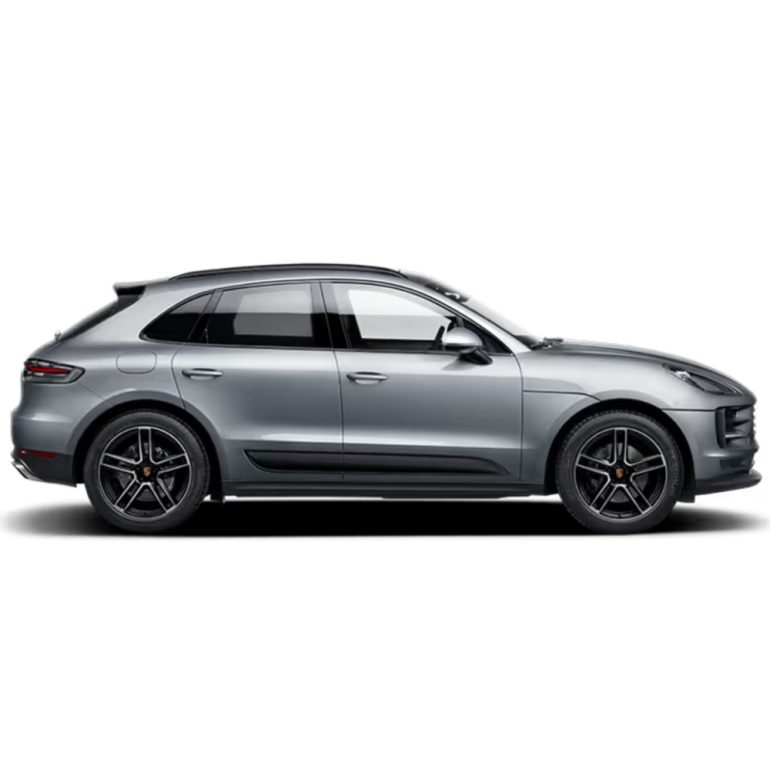
Although all models from 2015 to 2025 fall under the first-generation Porsche Macan (95B) umbrella, the lineup underwent several important updates over its lifecycle that kept it competitive and fresh well into its final production years. Porsche’s strategy was to refine—not reinvent—the Macan, and the result is a used market full of options that look similar on the surface but differ significantly in tech, performance, and driving feel.
The earliest Macans (known as 95B.1, 2015–2018) established the model’s reputation for delivering sports car-like dynamics in an SUV body, though they lack the modern tech and infotainment of later versions. The 2019–2021 refresh (95B.2) introduced a sharper exterior, a vastly improved touchscreen, and updated engines—bringing more refinement and performance across the board. The final version, 95B.3 (2022–2024), marked the most advanced and polished iteration, with updated interiors, haptic-touch controls, and a reshuffled trim hierarchy where the GTS became the performance flagship.
2nd Generation Macan (2025 - Present)
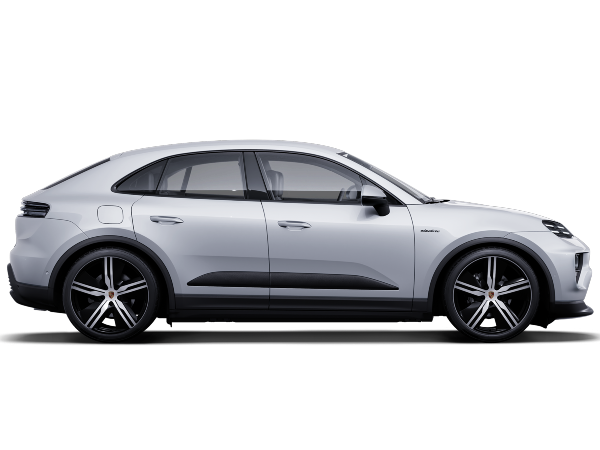
The second-generation Porsche Macan, launching in 2025, marks a pivotal shift for the model—and the brand—as it transitions to an all-electric future. Built on the new Premium Platform Electric (PPE) developed with Audi, this Macan is no longer an adaptation of an existing gasoline platform but a ground-up EV engineered to blend performance, efficiency, and next-generation technology. It features a sleek, coupe-inspired silhouette, a longer wheelbase for better interior space, and Porsche’s unmistakable design language evolved for the EV era.
Powering the new electric Macan are dual-motor all-wheel-drive setups, offered in variants like the Macan 4, Macan 4S, and Macan Turbo. Outputs range from strong to staggering, with the Macan Turbo delivering up to 630 horsepower and achieving 0–60 mph in as little as 3.1 seconds. All models use a 100 kWh battery, offering up to 315 miles of range depending on configuration and conditions. Thanks to an 800-volt architecture, the Macan supports ultra-fast DC charging—up to 270 kW—enabling a 10 to 80 percent top-up in just over 20 minutes when conditions are ideal.
Porsche Macan (1st Generation) Basics
Type: 95B
Updates: 95B.1, 95B.2, 95B.3
Generation: First Generation
Manufacturer: Porsche AG
Production Years: 2014 - Present
Model Years: 2015 - Present
Designer: Michael Mauer
Body Style: 5-Door SUV
Layout: Front-engine,AWD
Platform: VW Group MLB
Engines: 2.0-litre EA888 Gen 3 (CNCD) I4 Turbo TSI (Macan), 3.0-litre V6 Turbo-diesel TDI (S Diesel), 3.0-litre V6 TT TFSI (S & GTS), 3.0-litre V6 Turbo TFSI (S, Facelift), 3.6-litre V6 TT (Turbo), 2.9-litre V6 TT TFSI (GTS & Turbo, Facelift) /
Transmission: 7-speed PDK
Official Photos: Nov 19, 2013
Premiere: Nov 19, 2013
Market launch: April 5, 2014
The Porsche Macan was first seen in November 2013 and went on sale in the United States in 2014 as 2015 model year car. It was going to be called the Cajun originally, but changed the name to Macan before launch. The meaning? Macan means Tiger in Indonesian, which pretty much sums up Porsche's small and sporty SUV. Porsche says the Macan is for people who like the idea of a sports car, but need a little more room in their life. When it was launched in 2014, a few miles on some country roads was all real drivers needed to understand that Porsche’s DNA had been successfully transplanted into the company’s new, mid-size SUV. The Porsche Macan was the real deal. The Macan was Porsche’s fifth model in the lineup and represented Porsche’s first foray into the luxury compact CUV segment. The Macan sits on Volkswagen’s MLB platform (shared with the Audi Q5).
Originally, Porsche launched the Macan S and the Macan Turbo. The second model year, 2016, didn’t bring many changes to the Macan, aside from three-zone climate control becoming standard. But 2017 gave us a new trim, the Porsche Macan GTS, designed to fit between the two launch models with its 3.0 twin-turbo V6 and slightly more boost pressure than the S. It also had standard PASM adaptive suspension paired with air springs. Porsche added a 2.0L in-line 4-cylinder turbo model as the Macan entry point. All models got Porsche's superb seven-speed PDK and electro-mechanical power steering, a double wishbone front suspension and what Porsche calls a “self tracking trapezoidal link” suspension in the rear. All Macans get six-piston front brake calipers and single-piston floating rear clampers. Those calipers are putting the squeeze on 13.8-inch front rotors on the Macan S and 14.2-inchers on the Macan GTS and Turbo. Rear rotors are 13 inches on the S and GTS, while the Turbo gets the bigger 14-inch rear pizzas.
In July 2018, Porsche unveiled a new facelift for the Macan range in Shanghai. The production started the following month and the Europeans saw it at the Paris Motor Show in September. The 2019 Porsche Macan update includes refreshed exterior styling that includes updated front and rear bumpers, new taillamps that span the width of the liftgate, and new wheel designs. Porsche also gave us another update to for the 2022 model year. While this isn’t a full redesign, the Macan got some notable tweaks to its exterior, interior and mechanicals. Across the 2022 Macan lineup, Porsche gave buyers more powerful engine options compared to 2021 models.
The Macan is the top selling Porsche and looks likely to be the car that defines the company going forward. It outsells all the other models by some margin. There were just 3880 new 718 (Boxster/Cayman) owners in 2019. Compare that to the 22,667 new owners of the Macan in 2019 and the case for the Macan looks pretty solid! Since its market launch in 2014, over 137,000 units of the compact SUV have been delivered in America.
Porsche Macan (1st Gen) Model Guides
The production version of the Macan was unveiled at the 2013 Los Angeles Auto Show and 2013 Tokyo Motor Show. European models went on sales in spring 2014 and the initial line-up of models included the Macan S and Macan Turbo. Early models included Macan S, Macan Turbo. Porsche subsequently released a base Macan for select Asian markets and the United Kingdom. This engine became offered globally for the Macan's 2017 model year. Changes to the Macan for 2016 include Porsche Communication Management system, optional full-LED headlights, redesigned steering controller, extended exterior and interior packages for Macan Turbo. The 2019 model year Macan range got an update. Changes to the previous model include an overhauled chassis, a gasoline particulate filter fitted as standard, a new front and rear fascia with LED head- and tail-lights as standard, new exterior colors and wheel designs, and a redesigned interior with Porsche Communication Management with 10.9-inch touchscreen display and Connect Plus with Porsche Offroad Precision App as standard. Overall, this mid-generation Macan update heralded sleeker looks, lower ride profile, enhanced performance and new interior. While this isn’t a full redesign, the Macan got some notable tweaks to its exterior, interior and mechanicals for the 2022 model year. Across the 2022 Macan lineup, Porsche gave buyers more powerful engine options compared to 2021 models as well as the new Macan T. The lineup has remained basically unchanged since then and we expect it to end by 2026.
Porsche Macan (2nd Generation) Basics
Production: May 2024 – present
Model Years: 2025
Assembly: Germany: Leipzig
Designer: Michael Mauer, Woosung Chung
Layout: Rear-motor, RWD or Dual-motors, AWD
Platform: Premium Platform Electric (PPE)
Powertrain: 1 or 2× permanent magnet synchronous electric motor
Power output: Macan 335 hp, Macan 4 402 hp, Macan 4S 443 hp, Macan Turbo 630 hp
Transmission: Single-speed auto
Wheelbase: 2,893 mm (113.9 in)
Length: 4,784 mm (188.3 in)
Width: 1,938 mm (76.3 in)
Height: 1,622 mm (63.9 in)
Kerb weight: 2,330–2,405 kg (5,137–5,302 lb)
The Porsche Macan Electric represents one of the boldest shifts in Porsche’s modern history — not just a new version of a best-selling SUV, but a complete reinvention for the electric era. As Porsche’s second fully electric vehicle after the Taycan, the Macan EV is more than a product; it’s a strategic bet. It blends everyday utility with the performance pedigree Porsche fans expect — and in doing so, it attempts to deliver the same soul, without a drop of fuel.
The Macan story starts with the internal-combustion original, launched in 2014. That first-gen Macan quickly became Porsche’s volume leader, a gateway drug for those who wanted Porsche dynamics in a more practical package. As governments pushed for lower emissions and electric adoption ramped up, Porsche had a choice: electrify the Macan or risk watching the segment move on without them. The answer was the all-new Macan EV, revealed in early 2024 after years of development and pandemic-related delays. Built on the new PPE (Premium Platform Electric) architecture co-developed with Audi, the Macan Electric would not only go toe-to-toe with competitors like the Tesla Model Y and BMW iX — it would have to drive like a Porsche.
From the moment the covers came off, reviewers praised the Macan EV’s approach. This wasn't an EV phoning it in on badge value — the handling, steering, and performance all felt properly engineered. The Wall Street Journal remarked that the Macan Turbo, in particular, “leaves nothing on the table,” with explosive acceleration and confident chassis dynamics that made city and highway driving feel engaging. Car and Driver called it “the electric SUV that finally delivers what enthusiasts have been waiting for.” Even Jeremy Clarkson, known for his resistance to EV hype, remarked that the new Macan “drives better than it has any right to,” noting its cornering poise and high-speed stability.
Porsche launched the Macan Electric with four primary trims. The entry-level Macan Electric delivers around 355 horsepower and comes in rear-wheel drive, offering solid range and quickness in a cleaner, leaner package. Step up to the Macan 4 Electric, and you get dual-motor all-wheel drive and a boost to 402 hp — this is where Porsche’s AWD tuning really starts to shine. Then there’s the Macan 4S, pushing output to around 509 hp, with a sub-4-second 0–60 time and tighter damping for a more spirited ride. Finally, at the top of the range sits the Macan Turbo, with a staggering 630 hp and 0–60 in just over 3 seconds — that’s Taycan Turbo-level speed in a practical SUV form.
All variants share the same 95 kWh usable battery pack and 800V charging architecture, enabling up to 270 kW DC fast charging — meaning you can go from 10% to 80% in about 20 minutes under ideal conditions. Real-world range sits between 240 and 300 miles depending on spec and wheel choice, though WLTP figures are slightly more generous. Inside, the cabin is unmistakably modern Porsche — digital screens everywhere, but still designed with a driver-first philosophy. Materials and ergonomics remain a cut above what you'll find in most electric SUVs.
What makes the Macan EV special isn't just how fast it is — it's that it feels engineered, not programmed. The driving experience is nuanced, with steering that communicates, a suspension that adapts intuitively, and a sense of balance that belies the EV's weight. Porsche didn’t chase gimmicks or drag strip numbers — they built something that could hold its own in a corner, on a twisty road, or on a weekend getaway, all while emitting nothing from a tailpipe.
Porsche Macan (2nd Gen) Model Guides
A stunning menu of four Porsche Macan Electric trims is here to take the SUV and EV worlds to new heights. Awaiting you is an all-electric powertrain with up to 630 horsepower, a 0-60 time as adrenaline-inducing as 3.1 seconds, and a rapid charging time – all while you're ensconced in a premium modern cabin. There are four available Porsche Macan EV trims, each with a unique package of amenities. Every model offers excellent specifications, but the interior perks and performance change as you move up the lineup
Porsche Macan FAQs
What are the different versions of Macan Electric? Can you explain it to me in a few sentences.
The Porsche Macan Electric comes in four main versions: the base Macan Electric, Macan 4 Electric, Macan 4S Electric, and Macan Turbo Electric. The base model is the entry-level option, likely with rear-wheel drive and the lowest power output. The Macan 4 adds dual-motor all-wheel drive and around 402 hp, offering balanced performance and range. The 4S steps things up with more power and quicker acceleration, bridging the gap to the top-tier Macan Turbo, which delivers over 600 hp and thrilling performance worthy of the badge. All models share Porsche’s new PPE platform, 800V architecture, and the unmistakable feel of a true Porsche.
Does the electric Macan drive like a real Porsche?
Yes — the electric Macan drives very much like a real Porsche. In fact, that’s a core part of its identity.
Porsche engineered the Macan EV (built on the new PPE platform) to feel as connected and performance-oriented as its combustion siblings. Steering is precise and well-weighted, the ride is composed even on rough roads, and acceleration is potent — especially in the Macan 4S and Turbo variants. The chassis tuning, weight distribution, and low center of gravity (thanks to the battery pack) give it a remarkably planted feel in corners. It may be an SUV, but it behaves more like a sporty hatchback with serious grip and balance.
Most importantly, it feels like a Porsche from behind the wheel — responsive, agile, and refined. Porsche purists may still prefer the bark of a flat-six, but dynamically, the electric Macan absolutely earns its badge.
Is the gas/petrol Porsche Macan being discontinued?
When the Porsche Macan Electric arrived, we expected that the current internal combustion Macan would be discontinued, at least that's what Porsche had been telling us for years. Then a funny thing happened. The Macan Electric launched, and well.... the ICE Macan is still here.
As we write this update in May 2025, Porsche is considering adding combustion engines to future model lines that were originally envisioned as EV-only, including the Macan. Lutz Meschke, Porsche’s Chief Financial Officer, confirmed this pivot in strategy, stating, “We are exploring the possibility of equipping some of the originally planned electric models with hybrid drives or internal combustion engines in the future. Conceptual decisions are being made, but what is clear is that we are committed to the combustion engine for much longer.”
Despite the warm reception of the Macan EV, the automaker is cautious. The EV market’s unpredictability has them hedging their bets. The ICE Macan has long been one of Porsche’s best sellers. With over 500,000 units sold globally since launch, it remains a cornerstone of the brand’s success alongside the larger Cayenne. Regulations forced the automaker to axe the Macan from its European lineup in 2024. While the the ICE-powered Macan will remain on sale for the “foreseeable future” in other markets including North America, an updated version would certainly help boost sales.
Do Porsche Macan hold their value?
Yes, the Porsche Macan generally holds its value better than many other luxury compact SUVs, though it still experiences notable depreciation over time.
According to iSeeCars, a new Macan depreciates approximately 42.5% after five years, resulting in a resale value of around $36,182. This performance is better than the luxury compact SUV segment average, which sees a 53.1% depreciation over the same period. Kelley Blue Book also recognized the Macan's strong resale value, awarding the 2021 model a Best Resale Value Award with a predicted five-year retention of 42% of its original value.
However, it's important to note that while the Macan retains value better than many competitors, it doesn't match the resale strength of Porsche's two-door sports cars like the 911. Factors such as high production numbers, the prevalence of lease returns, and concerns over maintenance costs can influence its depreciation.
Is the Porsche Macan expensive to maintain?
Yes and no. Compared to mainstream SUVs, it’s more expensive—expect to spend $1,200 to $2,000 per year on maintenance and wear items like brakes and tires. However, it’s less costly to own than many rival luxury performance SUVs and is more reliable than earlier Cayennes or Panameras. Choosing a Certified Pre-Owned (CPO) Macan or one still under warranty can help manage costs, especially for unexpected repairs.
Is the Porsche Macan reliable?
Yes, the Porsche Macan is generally considered reliable, especially by the standards of high-performance luxury SUVs—but with a few caveats depending on the model year, engine, and maintenance history.
Strong Overall Reputation
The Macan is often praised as one of the more dependable Porsche models, and it consistently scores well in long-term owner satisfaction surveys. It’s built on a solid foundation using proven Volkswagen Group components (shared with Audi and VW), but Porsche applies its own tuning, performance parts, and quality standards. As a result, most Macans feel robust, solidly built, and free of major design flaws, particularly in later years.
Key Reliability Trends by Generation
Early models (2015–2018) had some teething issues—most notably transfer case failures, which led Porsche to extend the warranty on that component to 7 years/unlimited miles for affected vehicles. Infotainment in these years also feels dated and can be glitchy, but it's rarely a mechanical failure.
Post-2019 models (95B.2 and 95B.3) have shown stronger reliability, with fewer reports of drivetrain or suspension problems. The updated infotainment system is significantly more stable, and engine updates brought both better performance and durability.
What Helps Macan Reliability?
The Macan's engines (especially the 2.0L turbo-four and newer 2.9L twin-turbo V6) have proven sturdy when maintained properly. The PDK transmission is one of the most robust dual-clutch units in the industry. Common wear items like brakes and tires will be more expensive than mainstream SUVs—but that’s expected for a performance model. Major issues tend to come only with deferred maintenance, high mileage with poor records, or performance abuse.
If you're buying a well-maintained Macan with full service history, especially a CPO model or one from 2019 or newer, you can expect a very reliable ownership experience. Just remember—it’s a Porsche, so while major failures are rare, maintenance and parts aren’t cheap, and skimping on service can lead to problems over time. Want a breakdown of reliability by engine or a checklist of common problem areas to watch for? I can help with that too.
What's a quick summary of differences between the 95B.1, 95B.2 and 95B.3 Macans?
The 95B.1 Macan (2015–2018) represents the original version of Porsche’s compact SUV, and while it set the benchmark for driving dynamics in its class, it also reflects the era in which it was launched. These models featured a more analog cabin, a smaller 7-inch infotainment screen, and early V6 engines: a 3.0L twin-turbo in the Macan S and a 3.6L twin-turbo in the Turbo. The base 2.0L four-cylinder and enthusiast-focused GTS were introduced partway through this period. While these early Macans are engaging and offer strong performance, they’re also known for a few common issues—particularly transfer case failures—and lack the modern tech found in later versions.
The 95B.2 update (2019–2021) brought a major refresh to the lineup. Porsche introduced a new full-width LED rear light bar, updated the bumpers, and—most importantly—completely overhauled the infotainment system with a 10.9-inch touchscreen featuring Apple CarPlay (though still no Android Auto at this stage). Engine updates were significant as well: the Macan S received a single-turbo 3.0L V6 with improved torque and efficiency, while the GTS and Turbo received the 2.9L twin-turbo V6 tuned to 375 hp and 434 hp, respectively. These models are widely considered the "sweet spot" for buyers, offering the right mix of modern tech, performance, and refinement without the pricing premium of the newest cars.
The 95B.3 Macan (2022–2024) marks the final iteration of the first-generation platform and brings the most advanced and polished version of the Macan yet. Visually, it features sharper exterior styling, while the interior receives a major overhaul with a cleaner, more modern layout and a touch-sensitive center console that replaces most physical buttons. The Macan Turbo was discontinued during this phase, and the GTS—now with 434 hp—became the flagship performance model. The Macan S moved upmarket as well, now powered by a detuned version of the same 2.9L twin-turbo engine. Porsche also introduced the Macan T during this period, which paired the base 2.0L engine with chassis upgrades like PASM and stiffer suspension tuning for a more dynamic, enthusiast-oriented feel. These final models offer the most contemporary tech and design while retaining the sporty personality that defined the Macan from the beginning.
Join Our Porsche Community
Sign up for our weekly Porsche newsletter. The latest Porsche news, rumors, reviews and more delivered to your inbox. Cool Porsche stuff perfect for the flat-six obsessed.


